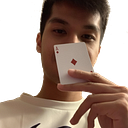From Placeholders to Art Assets
For today’s article, I’ll be going over the benefits of prototyping a game without using art assets.
As a software developer, the main focus of building out a game is to carve out the functionality or core mechanics of the game. For the space shooter game I’m developing, the core mechanics are:
- Moving the player ship using the wasd or arrow keys
- Firing a projectile or a laser by pressing the space bar
I initially thought that I needed the art assets first before I can start building out the programming logic of the game. What happens when you are working on a team and the art hasn’t been made yet? Do you wait until the artist finishes creating all the assets for you to integrate in the game?
Building out the game using placeholders
The answer is to use placeholders such as cubes, squares, and circles to have a temporary visualization of what a player, enemy, or laser should look like.
The purpose of using placeholders is to allow the programmer to focus on building out the core functionality of the game such as player movement without worrying about how the animations or the overall look should be as that is a separate problem to have.
The other benefit of using placeholders is if you are on a team, it allows you to build out the logic of the game without needing to wait on the artist for all the finalized assets to be ready. Once the art assets are ready, the placeholders can be swapped out with the final art assets. If additional logic needs to be added in such as building out animation states using Unity’s animation system, then that concern can be tackled at that given time.
In summary, using placeholders while programming the game allows the programmer to focus on building out the interactions that happen within the game such as player movement or picking up power ups and less on how the game should look.
Thanks for reading!
